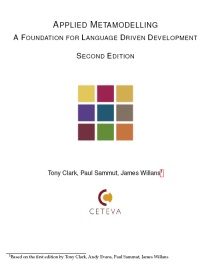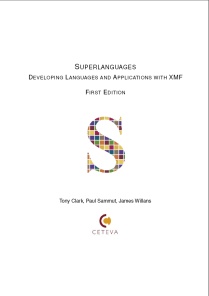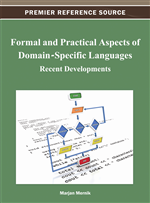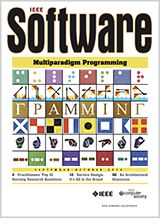- Domain
Engineering: Product Lines, Languages and Conceptual Models.
Iris Reinhartz-Berger, Arnon Sturm, Tony Clark, Shalom Cohen,
Jorn Bettin. Springer, 2013.
ISBN:
978-3-642-36653-6 (Print) 978-3-642-36654-3 (Online).
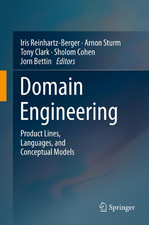
Domain engineering is a set of activities intended to develop, maintain, and manage the creation and evolution of an area of knowledge suitable for processing by a range of software systems. It is of considerable practical significance, as it provides methods and techniques that help reduce time-to-market, development costs, and project risks on one hand, and helps improve system quality and performance on a consistent basis on the other. In this book, the editors present a collection of invited chapters from various fields related to domain engineering. The individual chapters present state-of-the-art research and are organized in three parts. The first part focuses on results that deal with domain engineering in software product lines. The second part describes how domain-specific languages are used to support the construction and deployment of domains. Finally, the third part presents contributions dealing with domain engineering within the field of conceptual modeling.
- Model
Driven
Engineering
Languages
and
Systems,
14th
International Conference, MODELS 2011, Wellington, New
Zealand, October 16-21, 2011, Proceedings, Series:
Lecture
Notes in Computer Science, Vol. 6981, Whittle,
Jon;
Clark, Tony; Kühne, Thomas (Eds.), 1st Edition., 2011, XVIII,
726 p.
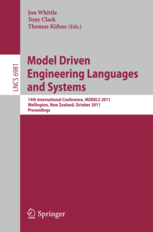
This book constitutes the refereed proceedings of the 14th International Conference on Model Driven Engineering Languages and Systems, MODELS 2011, held in Wellington, New Zealand, in October 2011. The papers address a wide range of topics in research (foundations track) and practice (applications track). For the first time a new category of research papers, vision papers, are included presenting "outside the box" thinking. The papers are organized in topical sections on model transformation, model complexity, aspect oriented modeling, analysis and comprehension of models, domain specific modeling, models for embedded systems, model synchronization, model based resource management, analysis of class diagrams, verification and validation, refactoring models, modeling visions, logics and modeling, development methods, and model integration and collaboration.
- Applied
Metamodelling: A Foundation for Language Driven
Development. Second Edition, Feb 2008. Tony
Clark, P. Sammut and J. Willans. (161 Google Scholar
citations)
- Superlanguages: Developing
Languages and Applications with XMF. First
Edition, March 2008. Tony Clark, P. Sammut, J. Willans.
- Object Modeling with the
OCL - The Rationale behind the Object Constraint Language.
Tony Clark, J. Warmer (eds). LNCS vol. 2263. 2002.

Jos Warmer and I produced this collection of papers by key authors in the field. The collection contains the original Amsterdam Manifesto that started the OCL movement.
- Proceedings of the
Workshop on Expressing and Reasoning about Constraints in
UML. Tony Clark, S. Kent and J. Warmer
(eds). March 2000. University of Kent.
- Proceedings of UML 2.0 -
The Future of the UML Object Constraint Language (OCL).
Tony Clark, J Warmer (eds). Workshop at UML 2000 - The Unified
Modeling Language. Advancing the Standard. Third International
Conference, York, UK, October 2000
- Proceedings of the third
Rigorous Object-Oriented Methods Workshop (ROOM3).
Tony Clark, A. Evans, K. Lano (eds). BCS Electronic Workshops
in Computing, ISBN: 1-902505-38-7, January 2000. York.
- Proceedings of the Third
Northern Formal Methods Workshop. A. Evans, D. Duke,
Tony Clark (eds). BCS Electronic Workshops in Computing, 1998.
